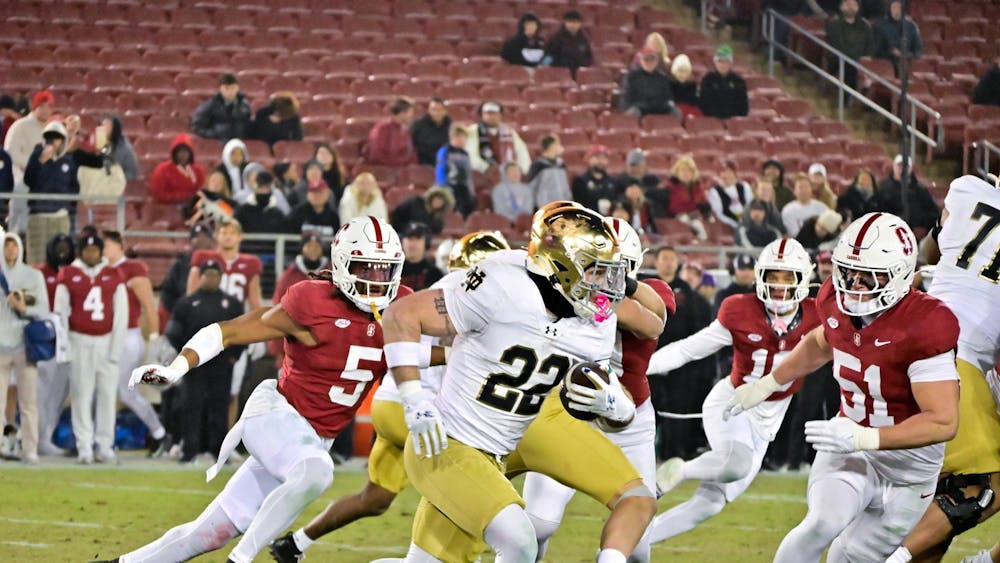
A great storyteller’s presence should be felt in their stories. Netflix’s four new short films — “The Wonderful Story of Henry Sugar,” “Poison,” “The Rat Catcher” and “The Swan” — have the distinct fingerprints of not one artist, but rather two. Adapting the short fiction of legendary author Roald Dahl, director and screenwriter Wes Anderson crafts four separate and distinct shorts. Anderson’s selection of stories create a fulfilling experience when viewed as an anthology or watched individually.
“The Wonderful Story of Henry Sugar”
The longest of the four short films at 39 minutes, this short boasts many famous actors among its cast. Benedict Cumberbatch portrays the eponymous gambler, while Dev Patel and Ben Kingsley interject as narrators of their own stories. The standout star of the piece is without a doubt Ralph Fiennes as Roald Dahl himself. Fiennes is the only actor to star in all four shorts. Cumberbatch plays the titular character skillfully, making himself believable as both arrogant and generous throughout the character’s development.The narrative of the short is like a nestling doll: the audience first sees Roald Dahl, the film’s primary narrator, as he begins to tell the story of Henry Sugar, who himself finds an intriguing book and begins to read it. The book’s author interviews a man with odd talents who goes on to tell the story of how he got these abilities. That is four distinct, separate layers, all with their own narrators.
The narration remains the collection’s most intriguing element, with the screenplays feeling as if they were lifted directly off of Dahl’s pages. Dialogue is delivered by the narrator, or characters will declare “I said” after making a statement. This stylistic choice is the most consistent aspect among all four shorts.
“Poison”
This short is an entertaining story about rising tensions as three men navigate a dangerous situation. The short is a perfect demonstration of Anderson’s iconic directorial style — until it isn’t. At the story’s boiling point, Anderson’s meticulous cinematography is abandoned, with the camera at angles slightly askew and shaking. It’s not until the tension is dispelled that Anderson’s uniform style returns. This short features Cumberbatch, Patel and Kingsley.“The Rat Catcher”
In 2013, “Saturday Night Live” produced a parody short titled “Wes Anderson Horror Trailer.” A decade later, Anderson developed his first project that could arguably be labeled as a horror film. Tension is built by what we cannot see. Props and details are not physically there, despite the narration saying otherwise. The performers pantomiming as if these items are present can be unsettling for the audience. However, being able to see what they’re referencing can be even worse.The moment the Rat Catcher pulls a rat out of his pocket — visible to the audience this time — the short’s tone goes from dark to disturbing. This unease is furthered by the Rat Catcher speaking off-screen while the Rat’s mouth moves in time. Later in the short, Anderson uses his signature elaborate set design to craft a twist more reminiscent of Poe than Dahl. Without a doubt, this will be the short that sticks with me the most. This short stars Ralph Fiennes as the Rat Catcher, in his only appearance in the collection not as Dahl, alongside Richard Ayoade and Rupert Friend.
“The Swan”
Perhaps the most dour note to end the collection on, I finished my watch-through of the anthology with this story. A truly intimate story, “The Swan” features only one main actor apart from Fiennes’ Dahl. Rupert Friend takes on roles as the narrator and multiple other characters. Where “The Rat Catcher” induces terror through the disturbing, “The Swan” elicits dread through its realism. Delivered more like a dramatic monologue than a narrative, the story touches on themes of transformation, escape and ambiguous narrators, emphasizing the importance of Dahl in the stories being told. Although it’s the most heartbreaking of the four, watching it last made me appreciate the collection as a whole. It is a devastating way to end the experience, but if you watch all four shorts back-to-back, I would be remiss not to recommend you end with “The Swan.”All four short films can be streamed on Netflix.









